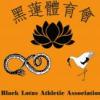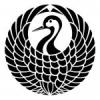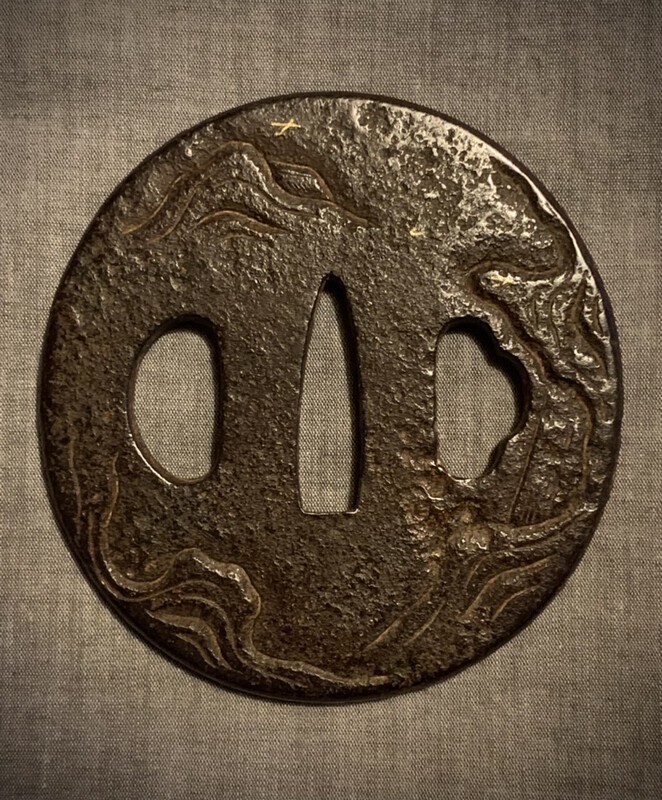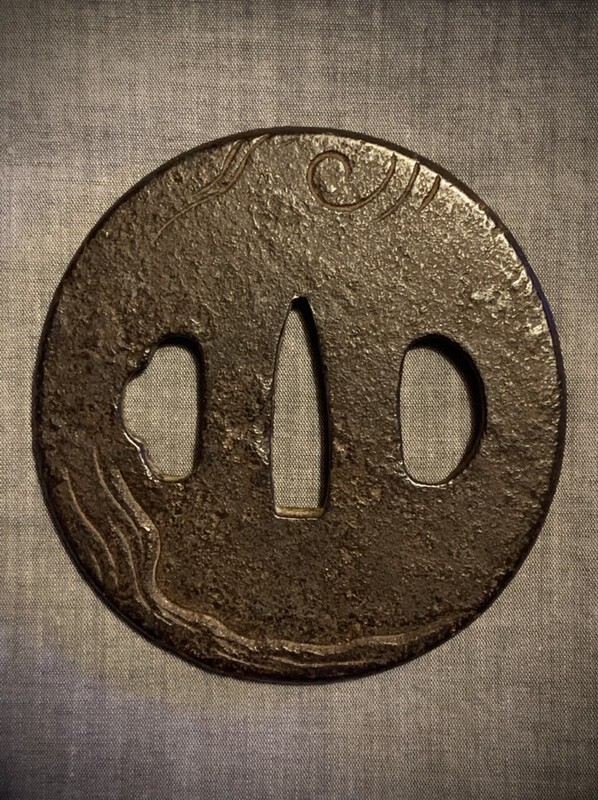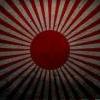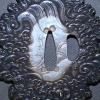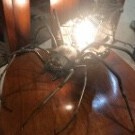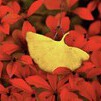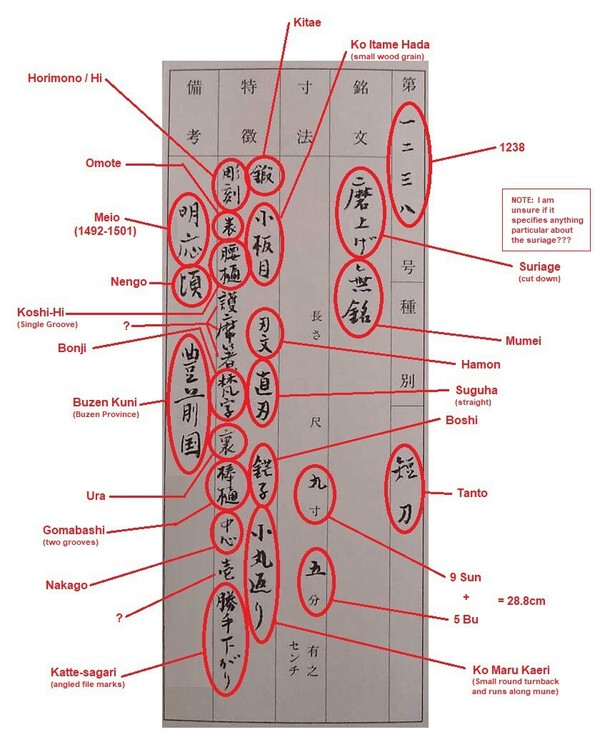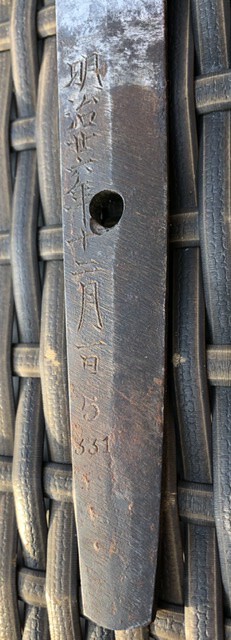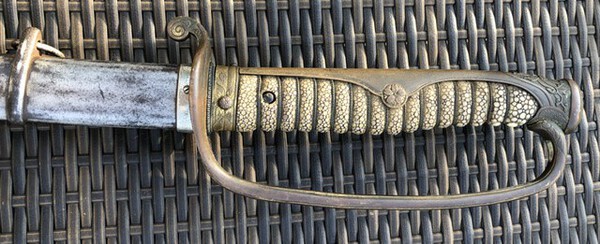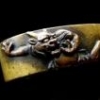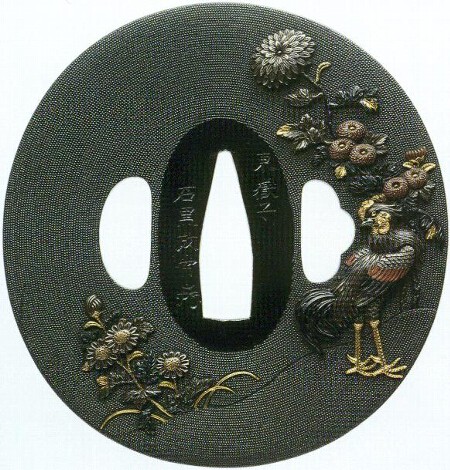Leaderboard
Popular Content
Showing content with the highest reputation on 03/09/2021 in all areas
-
I do personally think the attribution for a mumei sword is the best option the shinsa panel is able to give at that exact moment. As Barry said earlier the higher you go in level the more time is given to each item. I remember few years ago I wrote a small topic where I praised the expertise of the shinsa panel, as there seemed to be lot of negative opinions about NBTHK shinsa around that time. Here is an example, in 2020 I saw live 0 new swords, while NBTHK shinsa attributed thousands of items, and most likely saw lots and lots of stuff aside from evaluations. Just for Jūyō 66 session 805 swords were sent in (of which 119 passed), add all the Hozon & Tokubetsu Hozon submissions and you'll understand the NBTHK shinsa handles very large amount of items every year. I do believe they will judge the item and appoint a plausible attribution to it with their combined knowledge. When you get to Jūyō and Tokubetsu Jūyō NBTHK provides more information about the item, which as described earlier can be fascinating. Lot of the items will have multiple possibilities but in their current format I believe they will choose one and I do think they go for the one they judge most plausible one at that moment. With higher level attributions you have the luxury to be able to read more about the item, where as for Hozon & Tokubetsu Hozon you will just have the attribution. I know there are some evaluations that are generally seen as "low level" or "buckets" but I do think sometimes the kantei features point towards making these attributions being plausible ones. There are still some good mumei items within these attributions. Also NBTHK can change their judgement for partial signatures too. I posted this topic on an interesting tanto I did some research on: I have seen similar thing happen also at Hozon/Tokubetsu Hozon level but it is much harder to track down than at Jūyō. Another shinsa session has judged the same sword to be the work of different smith (relations can vary). For example Mino swords signed 兼□ Kane X, there would be countless possibilities for the smith, hence usually the safe option would be just to put mei: 兼□ and possibly something like (Seki) in brackets etc. I know many seek commercial value with NBTHK attributions. I believe most people would be furious if the paper would come back with just something in the lines of Tachi - Mumei (late Kamakura), I assume people would prefer something like Tachi - Mumei - Enju etc. where the kantei points towards to as a plausible attribution.4 points
-
4 points
-
That is a great photo in that it associates a particular style of gunto with the NLF. I believe I see a blurry anchor on the man's cap. Allow me to post what I believe was a gunto carried by an NLF officer. It has a koto blade, tired and possibly re-tempered. It has a poorly made civilian Showa-era tsuka with plain brass fuchi-kashira, old iron plate tsuba, and plain wood saya with black leather cover and two leather hangers with brass D-rings. A basic rig for an officer of limited means. I believe its similarity to the sword of the NLF officer in the photo is clear. William G.4 points
-
Fukurin start off as flat strips of thin metal, they are accurately shaped like a frame around the outside of the tsuba and then silver soldered close. Only then is the 'frame' fitted to the tsuba and the overlapping edges of the frame gradually cold worked down onto the surface of the tsuba plate. On iron tsuba this would be done after the iron patina has been fully developed. You'll find a series of images showing this process here: https://photos.google.com/share/AF1QipPDjMsj6e4pIjnu5RaoPG693ANz-JBM9ERTXnHs1_Lf34RmDP1k3u8nU8di-yShHQ?key=NHF6N0VTb0J4anlJZ1lQWjhyeE1VQm9EQVltLW13 In this case it's a shakudo fukurin on a yamagane-like base plate but the procedure on iron would be exactly the same. This is also why we often encounter applied rims that are a little bit loose, it's very tricky to close the edges inwards without the outer edge stretching a little bit.4 points
-
Hi Thomas. Long time, no see! The date reads: 昭龢九甲戌年霜月上浣 Shōwa kyū kinoe-inudoshi shimotsuki jōkan "First third of the eleventh month of Shōwa nine (1934), year of the dog." The nengō is written with a very uncommon variant of the WA (和) character (see below). 龢3 points
-
3 points
-
I think shortening a blade doesn't make any sense nowadays... (I wouldn't have my leg amputated to look better just because my kneecap was broken.)3 points
-
Nice sword. i agree with the 1940 , however I would say it’s the fiscal year 1940 which includes he first quarter of 1941. i would be confident in saying Feb/Mar 1941 as the serial number is right at the end of the years production. The screw does appear to be a bit odd, so I’ll check with other swords in the same range from the same sub-contractor2 points
-
2 points
-
Some while ago Stephen put up a link to Ford discussing restoration of a tetsu same tsuka from a katana. This link shows Ford discussing restoration of a wakizashi koshirae: https://www.youtube.com/watch?v=X0yk24gfjWg In the beginning he also revisits the tetsu same tsuka to show results of the conservation of this item. BaZZa.2 points
-
兼綱 Kanetsuna 1石州兼綱 Sekisyu Kanetsuna 2應安六百年前 Ouan600years before 1 Sekisyu are written on tha saya,but I thik its a mistake of Nosyu.(濃州) 2 It is written that Ouan's time around 1370 was 600 years ago. But Kanetsuna was the author of the Muromachi period, so I think 450 years appropriate.2 points
-
2 points
-
Just found this online and ordered it. Am I safe to assume its a lightweight gunto like from page 160 from Dawson's book? Or is it possibly some sort of replica? Would love to hear your opinions. Thanks1 point
-
Hello, Ordered some special Katana,- and Wakizashi bags (different sizes and without the leather bottom.. based on my request - see attached pictures) from Tomoko-san via eBay and from here shop directly for a very good price. I was quite surprised on the quality of these bags and the professionalism Tomoko-san is working. I can fully agree Greg, these bags are great! Communication was also very good - despite the big time difference. The whole transaction was very smooth and reliable, same the delivery. I am really happy. If somebody is also interested in, here the contact details: eBay: futtmk_047omvqpw FB: Kokoro Heart Sewing So finally, I just can really highly recommend the service from Tomoko-san and will for sure order additional bags and many thanks to Greg for introducing Tomoko-san´s business here. See also: regards Klaus @Admin: I added this in the Izakaya section as well, as I am really happy. If it´ not allowed, please delete it here.1 point
-
1 point
-
For any given time, you can know one or the other but you can't know both. Saying you know the position at time A and the momentum at time B doesn't give you anything about the momentum at A or the position at B. So, the point is that if you ask for both position and momentum simultaneously, you cannot receive an answer to this question. Attacking that by saying yes but you can ask in sequence means you've misunderstood the point. The reason it's brought up is cited right in the post, because of the philosophical implication that: "it is a fundamental property of reality that some questions have no good answers." That is, there are more questions than there are answers as a rule, and it is just pointing out that we can't always get a satisfactory answer as a result. The overall goal is simply to guide people to a better understanding of attributions. > Dunning/Kruger effect is never far away. You are linking to a 14 year old post and using that as grist for a personal attack. You conflate expertise and infallibility as well. Dunning/Kruger is simply a personal attack. You have been working off of this bitter and angry script for multiple decades. The reason I stopped contributing to this board on a frequent basis is because it is simply mentally draining to deal with the intentional throwing of stones. Engaging with this just burns good minutes off of short lives. > Tanobe? is a Japanese and Darcy is a "gaijin". He can say what he wants, he knows Darcy will believe him. This is racism and a poor judgment of this man's character and shows a lack of imagination toward my own.1 point
-
It looks like an original screw. When it was added to the sword is impossible to know unless Stegel pulls one of his miracles with records of sword sales and could find something for that swords history. Because its an original screw, it's not really that bad so probably doesn't need replacing unless you want to. Original screws (or most small fittings) are hard to find and expensive though. Basically because a sword needs to be scrapped to make a replacement available. They pop up rarely for sale if you are prepared to pay for them.1 point
-
Welcome Chris! I may have been wrong about that screw, after seeing the nut-side. The black color just does not look right to me. But, the Aussie’s will be waking up in a few hours and @Shamsy and @Stegel should be able to clear that up for you. There are a couple of other guys that collect Type 95s that may have a better idea, too.1 point
-
Piers, the TSUBA was first and the airplane is a later addition. Vice versa it is much more unlikely.1 point
-
Dear Dan. How about sunagashi crossing the tani of the gunome? In this case they continue the linearity of the sunagashi and do not resemble crescent moons. As with all things in this area exact terminology does not survive first contact with an actual hamon unless it is a textbook example of a smith's work. All the best1 point
-
Technology exists that was not contemplated those days. At some point in the future, a lot of what we work according to will have to "change with the times" and stuff like shinsa and repairs will move with the future. In this case, now or eventually, micro laser welding will probably be able to fully repair a hagire, and the minute area (tenths of a mm?) where the hamon was interrupted would likely not cause structural failure. Eventually. But because this is still a tradition-based hobby, I don't think it will be accepted anytime soon. Look...a modern colour printer can print a portion of a painting perfectly. but if you damaged a part of the painting, even though you can glue a piece of the print over it, or even have it repainted to match 100%, it is not accepted the same as an original. Hagire etc is traditionally fatal. I don't think it is 100% because of possible failure in battle. Otherwise re-heat treating would restore a burned sword back to life and the sword would be just as valued as a weapon without any loss of value. It has to do with what flaws have always been considered fatal and what is accepted according to study and tradition. Sometimes we are just going to have to deal with the fact that although technically something can be done, it is still not going to be treated the same as something original.1 point
-
Thank you both. I tried to be diplomatic. Nothing more for me to say. :-)1 point
-
Jacques, you are so far off reality and truth when it comes to Darcy and Tanobe and this whole subject. But I am not in the mood for censorship as it will just look like I am biased. I have NO ties to any side here, I have no personal relationship with any of these guys. So I'll let others deal with your baseless accusations and hopefully Darcy will address this silliness himself.1 point
-
We cannot agree to disagree to misconceptions of this magnitude. The idea that Tanobe-sensei would lie and fabricate some nonsense to please a gaijin by stating a notion that goes against the surface level understanding is beyond preposterous. Where to start... And also the ubu zai ichimonji in suguha being the “majority” is plainly wrong. Early ko-bizen phase work of its founders may be found in suguha. Such works are less than 10% of extant ubu zaimei ichimonji. Mumei they would have gone to Ko-Bizen. May Hachiman give us the strength.1 point
-
1 point
-
1 point
-
#7 Can ONLY be a Hallam? Oh my word....that is a beauty. If envy was a crime, I'd be in solitary1 point
-
I have a somewhat different take on this one. If you look at 500$ poorly made poorly polished shinto waki, frankly speaking you'll probably never get the exact maker's name guessed right. Shinsa will identity someone, if only because that's the way Japanese express their opinions about things - by associating them with a lineage and a position within this lineage, instead of discussing style, quality in situ. But the reality is that lower level pieces are usually not very distinctive. With collectible swords, 80% of those in polish are fairly straightforward to kantei up to Dozen level. If you have really good photos or sword at hand, you can guess pretty quickly and pretty accurately when it was made, approximate school and approximate level of the maker within this school. And the better the sword is, the easier it is to do so. Really high class items are not too common even with Juyo papers, and the circle of people capable of making them is narrow. Conversely, the worse the item is, the harder it is to kantei. And then there are 10-20% which are born as weird things which mix and match very different school's features and you'll probably never get a final answer no matter how many shinsa you try. There are Hasebe sunnobi tanto with substantial sori, but very thin kasane. There are occasional Tsunahiro with thin kasane and similar sori. Despite being 200 years apart, both were large schools with greatly varying quality and features, even though they tend to be Soshu-based. So from time to time you see the blades like this - thinnish kasane but some sori, good Soshu work but not great enough to be considered early Soshu with certainty. Chances are you'll never know what it really is. All you get is a "circle of confusion" which say included Tsunahiro, late Masahiro, Hasebe, maybe some Shimada name and Nobukuni - and there is no reason to pick one of those with 100% certainty. Often such blades are resubmitted until they get the most desired name out of this crowd. There are schools which are widely known to give you headaches like this. Soshu is the most important example, in part as there are almost no signed examples from any of the absolutely first tier smiths, so the attributions can be a conjecture based on top of another conjecture. And there are also schools which are known to spread widely in terms of features. I woudl argue most pre-1300 blades are kind of like that. Ichimonji is distinctive, but only in its choji form - while a lot, if not the majority of still fully signed ubu blades by Ichimonji smiths are in suguha, and often quite ugly one at that. Patchy nie, lots of nagare, it looks almost Yamato, ko Hoki or something alike - nope, its signed by someone from Fukuoka Ichimonji. The greatest issue with Japanese way to do Art History is that its strictly vertical - you are defined by your father, not by your contemporaries. Which is very often not the case. And then there is politics. A lot of politics. Not surprisingly coming into play where the exact attribution is objectively hard.1 point
-
1 point
-
Hi Jacques I have some doubt myself seeing that it has the old paper, it was bought from a well known dealer but that means nothing. I have seen similar Mei on line, will need to give it more study. My dad bought this sword, I personally would not have as it's not to my taste although it has a nice koshirae. Cheers Chris H1 point
-
You will certainly find examples of Shin/Kai Gunto with a normal regulation Tsuka and that field type saya as well.1 point
-
1 point
-
I also agree that this is cast and I just couldn't resist when Barry wrote caste (which someone has since corrected).. Grey1 point
-
The reveal.... I wouldn't have gotten that in a million years. And I have no ideal what it might mean. But thanks! The NMB worked once again! Peter1 point
-
I wish that I could blame autocorrect. I agree with George's comments. The signature does not show the use of a tool - no tool marks. It looks cast. The lines/edges are all rounded. I thought that I could see some casting lines in the hitsu ana.1 point
-
Piers, Thnak you very much. I have not yet hit the "Reveal" button in part to stay uncertain and also becasue I know so little about these arms that having a "name' won;t change things for me. This adventure has been fun for me and reminds me what Japanese collecting used to be like. This gun truly was a surprise - and reasonable. It also required a bit of digging and doing that helped me see things I had not understood. I'm not done yet, but I think I have climbed most of this learning curve. Let me add a few bits... First, when I finally got the barrel out (boy, was it tight, I'll have to wax the stock up to get it back it), I could see that there was something in the ramrod channel. I could see nothing at the end of the channel, but in one of the spots were a pin had crossed the channel I spied a bit of a rod. I assumed that this was - like - a mid-section of a ramrod that had gotten lost on the channel. Getting it out ( after a bit of a challenge) it looks to me like an OLD (Original??) rod that is 30.5" and apparently unbroken. The barrel is 42" long, but the rod that was in the channel appears intact and unbroken. The head end is slightly widened and darkened from use. The opposite end has a hole near the tip and there is a slight carved ring about 2" up. I have no idea how this ram rod might have functioned, but it looks like an old associated part of this arm. I assume that this assoication is worth documenting, but I am not sure how - or where - that might be done. And thank you for telling me about the Buku-naoshi. I saw that feature, but I did not understand it. I think I will hit the reveal button, now. Thanks again! Peter1 point
-
If we are allowed an opinion, then may I say congratulations on finding a Mei. It's always a nice little bonus. I have not come across this smith before, but he is listed, and there were some other Fujita smiths with similar names, so he is in good company. There were about 300 gunsmiths in 阿州 during the Edo Period, so we can understand that under the Tokushima Han this was a prolific area of manufacture.1 point
-
Yes, Peter, A-Shu, Fujita, is correct. Maybe I should leave you with it a little longer? You seem to be doing fine on your own! Check below for spoiler PS Notice the lighter circular spot under the pan, indicating 'Buku-naoshi' refurbishment following (years of) heavy use.1 point
-
I very much think it does, and Barry’s response above is also quite good. Now, I didn’t say that the indication of relative quality is the only information contained in papers for mumei blades. This is very much a three or perhaps four dimensional concept, one that most collectors really struggle with. As I said Darcy has written extensively on this topic, and I find his arguments authoritative and pursuasive. Here’s a good example, and there are surely many more to be found on this very board: https://blog.yuhindo.com/20-go-80-norishige/#more-1521 point
-
People with two papers for the same sword usually find that if the smiths are different, the smiths are at a comparable level. A good mumei sword by a decent smith will not be attributed to a low level smith. It may be attributed to a smith at a comparable level but not the actual smith. Juyo swords have sometimes been attributed to a different smith when they earn tokubetsu juyo. I had a blade papered hozon to Enjyu that went to Hosho when it was papered juyo. The word Den in one level of paper may disappear at a higher level, or the reverse may happen. Do you think that the shinsa team spends the same amount of time on blades looking for hozon, tokubestsu hozon, juyo or tokubestsu juyo level papers?1 point
-
All, So as a part of my on going learning, I try to practice translating mei and kanteisho papers when I have time. Before we go too far, Ray Singer has a tanto in the For Sale that comes with NTHK papers (my translation attempt). As this is a sale item, I asked his permission to post this so as to not break any rules or potentially ruin a sale. Ray has graciously given permission for me to post this. So... attached, please find my attempt at translating the papers. Please feel free to correct me or add your insight... and PLEASE NOTE, there are a few ?'s I had that I could not translate or did not fully understand and if you could lend any assistance, I would appreciate it. Also, this is a translation by a beginner... for beginners. So please excuse my noting some things that are considered 'common knowledge' by most. Thank you in advance, Mark S.1 point
-
Nothing wrong with it as an item in your collection. Decent sword, genuine and not in terrible condition. Far better than many do early on in their collecting. But like others above, what would you gain from a piece of paper here that tells you who made it? Save that money towards your next purchase, and enjoy the waki as is. You are doing just fine so far.1 point
-
Very personal opinion: Such sugata typically goes to shinshinto or more likely Momoyama to Kanei period. Yasurime's state here and nakago condition is more consistent with the earlier date. The work etc. consistent with period's Mino examples. Its probably either the first Aizu Kanesada (Kanei period) or immedeately preceding Mino Kanesada generation. Its does appear authentic in all aspects.1 point
-
Excellently put. Next level: think of attributions as a global maxima on multidimensional probability density distribution. Rarely is a mumei sword a slam dunk. You often have multiple good ideas coexisting together, with one taking over the others as more likely which then constitutes your attribution. In reality you need to accept uncertainty and part of studying the sword is to understand where it fits in the great interconnected web of plausible candidates. Think of all the smiths as an interconnected web - a graph - where the thickness of the links represents proximity in their work. If you end up right in between two or three nods you'll have a case for "Den" Attributions also capture uncertainty, and not just via Den. When you go down the less reputed schools and the work lacks differentiability, attribution to these schools on a mumei sword may be an admittance of uncertainty in the judgement. More important than the top idea that comes up on the paper is all the other ideas that have been put aside with high certainty. A sword that comes back as Bungo Takeda or Ko-Udo can be a number of things around these waters, but Ichimonji it is not, etc. On less highly rated school, these attributions are the fruit of a process of elimination when you go down quality ladders.1 point
-
1 point
-
1 point
-
Here are some shots of my Murata-to. All the fittings are copper and the saya is canvas wrapped. It is not sharpened which makes sense if it is a practice sword. Also there are no Menuki but ovals of wood to orient the hands on the Tsuka. No. 103 w/ arsenal stamp. Two mekugi ana . Amazingly it's in perfect condition, Jim M.1 point
-
1 point
-
Michael What is an expert? It is a person able to identify the work of a blacksmith, it goes up to the generation and even beyond, that in few minutes. A true expert can say such a sword of such a blacksmith is better than this one yet of the same one and to explain why. It's not because there can be uncertainties that they don't know. Judging the quality of a steel, of hada, of nie (not the size) of chikei when there are some etc. is not that easy and needs years of study Saying Mihara instead of Naoe-Shizu because the work is not as good is nonsense because the two do not have the same characteristics (sugata, hamon etc.). Tanobe? is a Japanese and Darcy is a "gaijin". He can say what he wants, he knows Darcy will believe him. How much time does the experts team spends on a blade ? To know it, you would have to attend a shinsa session. Darcy an expert? no a dealer yes, it's easy to do what he does, you just need the funds to buy, it's easier to buy a juyo than an unpolished sword whose potential you have to guess.0 points
-
0 points







